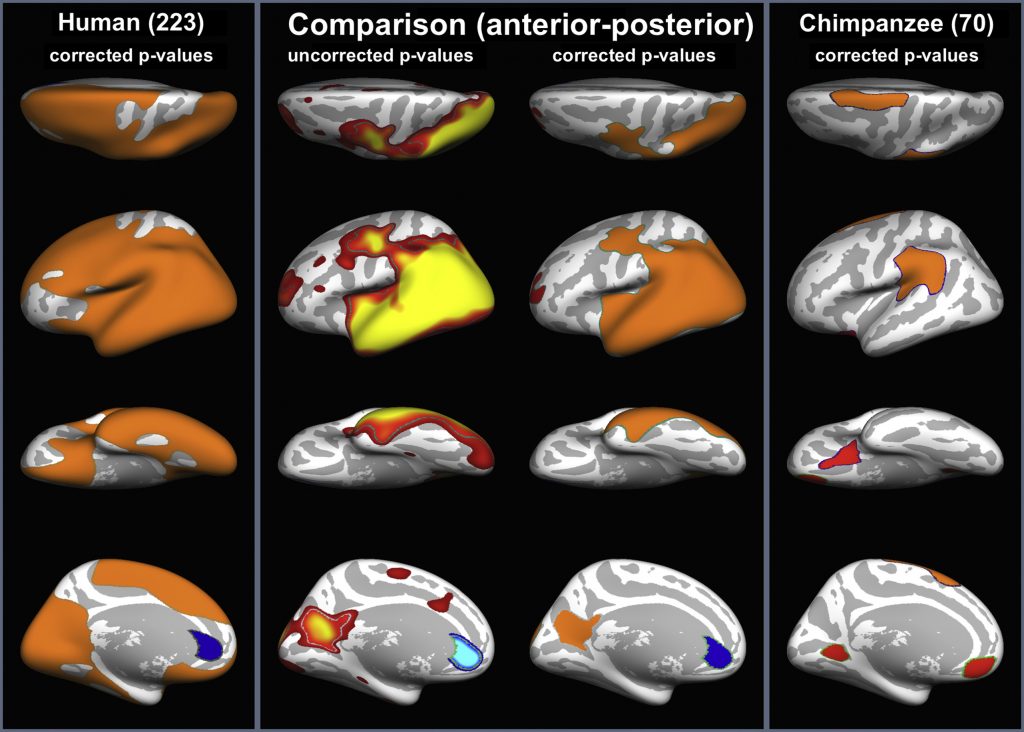Czy asymetria ludzkiego mózgu jest zjawiskiem wyjątkowym?
W 1877 roku Broca sformułował hipotezę, że człowiek jest ze wszystkich zwierząt, tym, którego mózg jest najbardziej asymetryczny. Tezę tę potwierdzają najnowsze wyniki badań mózgów 223 ludzi i 70 szympansów opublikowane na łamach NeuroImage.
Czy asymetria ludzkiego mózgu jest zjawiskiem wyjątkowym?

W przytaczanym badaniu analizowano zbiory danych 3D z rezonansu magnetycznego (MRI) w celu oceny asymetrii pozycyjnych w mózgu człowieka i szympansa w celu zbadania, czy istnieje różnica w asymetrii między tymi dwoma gatunkami. Jeżeli różnica między gatunkami jest anatomicznie znacząca, wówczas może świadczyć o potencjalnej roli funkcjonalnej lateralizacji, która jest szeroko opisywana jako podstawa języka u ludzi. To zaś może wyznaczyć dolną granicę charakteru przejścia gatunków, w szczególności, czy jest ona stopniowa, jak wierzył Darwin, lub czy (jak to jest wyraźnie zaznaczone w sformułowaniu Broki z 1877 r.) występuje element nieciągłości, tj. czy nowa cecha genetyczna jest wprowadzona na granicy gatunku.
Skupiono się na asymetrii półkul, polegającej na ich delikatnym skręceniu. W badania zaangażowani byli uczeni z ośrodków w Wielkiej Brytanii i w Chinach.

Obrazowanie za pomocą rezonansu magnetycznego wykazało, że u szympansów taka asymetria nie zachodzi. W przypadku ludzi i szympansów badania przeprowadzono za pomocą identycznych procedur i technologii.
U ludzi lewa półkula jest odrobinę dłuższa od prawej i nieco skręcona, u szympansów takiej różnicy nie widać – piszą naukowcy. Lewa półkula u ludzi odpowiedzialna jest za przetwarzaniem mowy. Najnowsze wyniki badań być może będą pomocne w lepszym zrozumieniu, w jaki sposób u ludzi wyewoluowała zdolność mówienia.
Human torque is not present in chimpanzee brain
XiangLiaTimothy J.CrowbWilliam D.HopkinscdQiyongGongeNeilRobertsa
https://doi.org/10.1016/j.neuroimage.2017.10.017





